





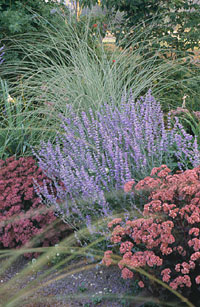
From 6-inch mounds perfect for edging, to towering 20-foot screens, there's a grass for every garden nook. Choose from a wide range of textures, seasonal colors, and outlines. Use their features to separate color swaths, to soften edges, and to blend boundaries.
Happily, most grasses are adaptable and a cinch to grow. In spring or fall, plant varieties suited to your local environment in soil enriched with compost. Each spring, after giving grasses a short haircut, work a low-nitrogen, slow-release fertilizer into the soil around the plants. Divide when necessary in early spring. Most will require watering only during dry spells.
continue reading belowGrasses reward good care with all-season beauty. Since most don't drop foliage during dormancy, they provide shape, color, texture, movement, and wind song long after frost-shy plants have finished their performances.
Slide Show: Ornamental Grasses in Fall
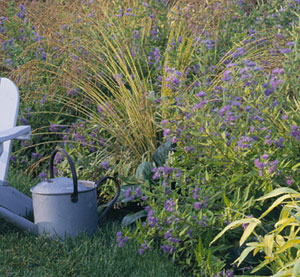
At home in a bountiful border, variegated purple Moor grass gilds its companion frothy blue 'Worcester Gold' caryopteris. Best in sun, winter-hardy Moor grass clumps compete well with tree and shrub roots and yield purple-blushed flower heads in summer.
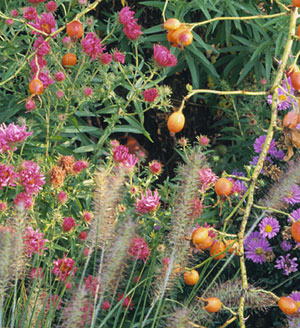
Fuzzy spikes, nestling like foxtails among asters and rose hips rise above the dark-green leaves of Pennisetum alopecuroides 'Hameln'. The sun-loving tufts of this dwarf fountain grass reach 2 to 3 feet. Its bristly flower spikes sparkle each morning with captured dewdrops.

Baby-soft blossoming spikes of Southwestern native Stipa tenuissima needlegrass lend the grace of the Great Plains to naturalized borders. Its 2-1/2-foot-tall clumps grow best in sun. Compadres in this sun-loving, water-thrifty threesome are violet speedwell and pink sundrops.
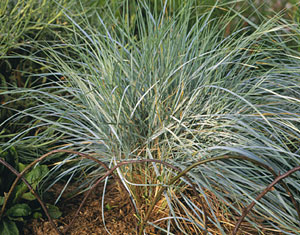
Bearing the truest of grass blues, blue wheatgrass (Agropyron magellanicum) cools the summer border like a stainless steel fountain. The 12-inch tufts send up wheatlike spikes in early summer. Provide a well-drained soil and light shade in regions with hot summers.
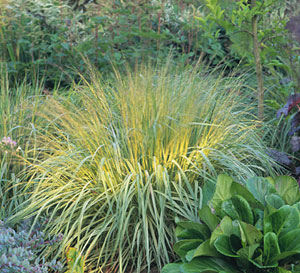
Variegated purple Moor grass (left) walks on the wild side at the heels of its refined neighbors: sedum, bergenia, and heuchera. Cast ornamental grasses in the role of noble savages in your landscape, adding a touch of untamable wilderness or prairie to otherwise civilized settings.
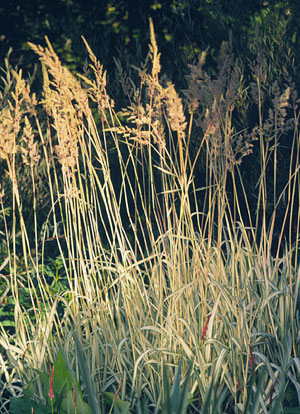
A first pick among gardeners for centuries, the Native American variegated ribbon grass, Phalaris arundinacea 'Picta' (left), can be found flourishing on old farm sites. This adaptable grower (best in part shade) often flags in midsummer. Trim plants to yield a flush of fresh foliage.
Copyright © www.100flowers.win Botanic Garden All Rights Reserved